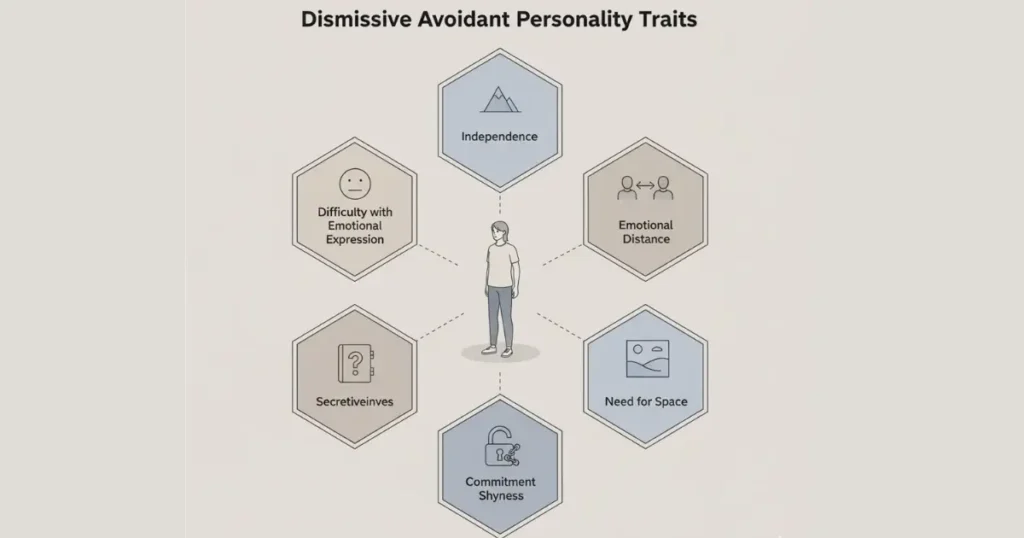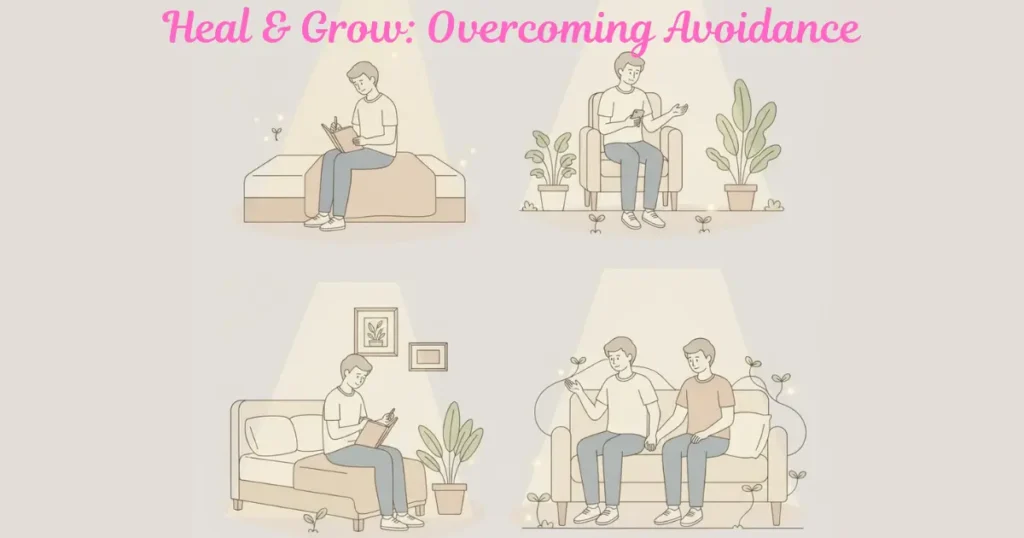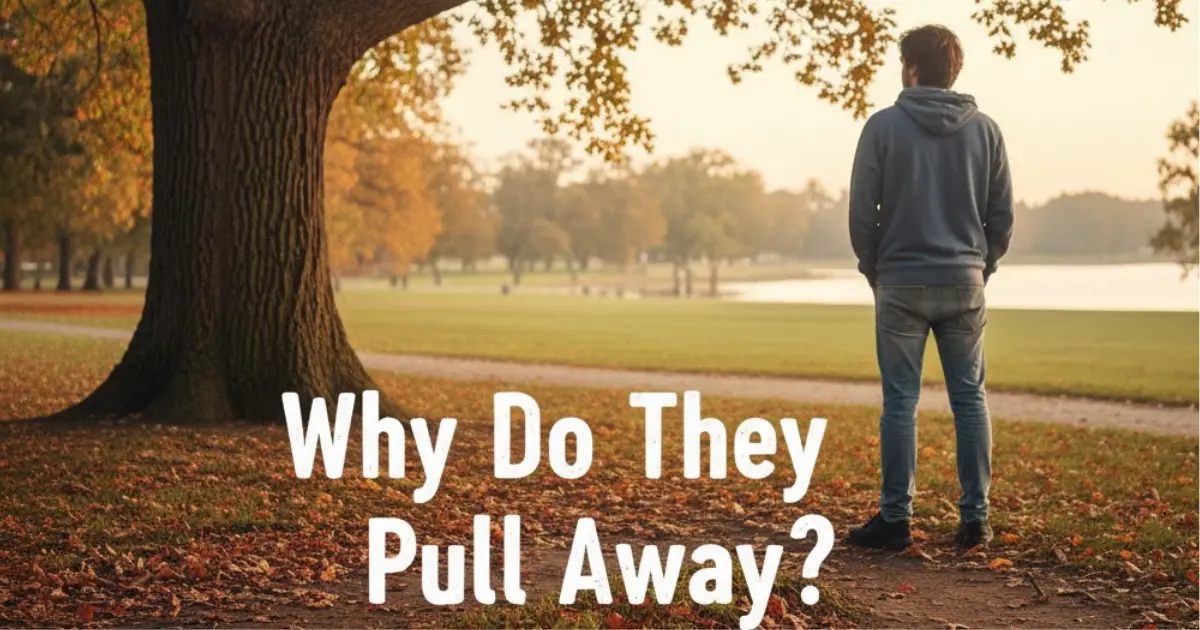Ever wonder why someone you care about seems to pull away just when things start getting close? Maybe they need lots of alone time, or they brush off deep talks with a quick “I’m fine.” If this sounds familiar, you might be seeing signs of a dismissive avoidant personality.
Don’t worry, this isn’t some scary disorder. It’s just an attachment style where someone learned early on to depend on themselves, sometimes because they grew up hearing things like, “Handle it yourself.” Over time, this turns into a habit of choosing independence over closeness.
So, why should you keep reading? If you are wondering, “Why do they act distant?” or “How can I connect with a dismissive avoidant personality?” this guide has your answers. We’ll break down the key traits to look for, the hidden fears behind the walls, and some simple, real-life steps to help you build better relationships. Whether it’s you, your partner, or a friend, you’ll find easy tips and real solutions here.
New to this topic? Check out our full guide on avoidant relationships.
Remember: You are not stuck dismissive avoidant personality can change with a little understanding and the right steps.

What is a Dismissive Avoidant Personality?
Dismissive avoidant personality comes from attachment theory. As kids, people with this style learned that reaching out for comfort or support didn’t work; maybe parents were busy, cold, or just not emotionally available. So, they went solo. On the outside, they seem cool, calm, and collected. Deep down, though, there is a fear of getting hurt if they let anyone in too close.
It’s important to know: dismissive avoidant personality is not a disorder. Some people confuse it with “dismissive avoidant personality disorder,” but that’s not a real diagnosis. There is a clinical condition called Avoidant Personality Disorder (AVPD), which is much rarer and involves intense social fears and avoidance. Dismissive avoidant is about emotional guardrails, not a mental illness.
Here’s a quick comparison of attachment styles:
| Style | Core Vibe | Example Belief |
| Dismissive Avoidant | “I got this alone” | Relationships? Nice, but not essential |
| Anxious | “Don’t leave me” | Clingy reassurance-seeking |
| Fearful Avoidant | “I want close… but scary” | Hot-and-cold intimacy |
| Secure | “We are good together” | Balanced trust |
If this sounds like you, know you are not alone; about 18–25% of adults lean this way. Let’s unpack why.
Key Traits of a Dismissive Avoidant Personality
Are you or someone you know a dismissive avoidant? Here are the everyday signs:
- Super independent: Handles crises solo, rarely asks for help.
- Emotions on mute: Downplays feelings (“It’s no big deal”) to avoid messiness.
- Space seeker: Needs “me time” often, especially when things get intense.
- Commitment shy: Dates casually, dodges “the talk” about the future.
- Secretive side: Shares little about their inner world, keeps plans private.
- High standards: Can be critical of others (and themselves) to stay in control.
- Work/hobby focus: Pours energy into solo pursuits over relationships.
- Quick to bail: Ends things if vulnerability creeps in.
Example Story:
Think of Alex: Great at fixing your car, but when you share a tough day, they switch to “Let’s grab coffee instead,” classic dodge. It’s not that they don’t care; it’s just easier to keep things light.
These aren’t symptoms of a disorder; they are patterns. If you see these in yourself or someone else, it’s a shield, not a snub. Spotting them is step one to softer connections.
How Dismissive Avoidant Personality Shows Up in Relationships
If you are dating or close to someone with a dismissive avoidant personality, you might feel like you are always chasing them. They are reliable, but emotionally distant. This can spark a push-pull cycle, especially if you are more anxious or crave closeness.
Common Struggles:
- Ghosting during fights or tough conversations
- Avoiding labels or “what are we?” talks
- Feeling “trapped” by your needs or expectations
Example:
Your date plans epic trips but skips heart-to-hearts. It’s not disinterest, it’s fear of losing freedom.
Partner Tips:
- Respect their need for space. Try, “Cool if we chat later?” instead of pushing for a talk right now.
- Focus on actions over words. They might show love by fixing things or running errands, not by saying “I love you.”
- Build trust slowly. Don’t rush deep talks; let them open up at their own pace.
Hidden Fears Behind a Dismissive Avoidant Personality
Underneath the calm, cool surface, dismissive avoidants have some big fears:
- Vulnerability feels like weakness.
- Closeness = loss of control.
- Rejection confirms “I’m better off alone.”
Why? Childhood wired self-reliance as survival. If reaching out for comfort didn’t work, you learned to handle things yourself.
Gentle insight: These fears aren’t flaws; they are old habits. Naming them cuts their power. Next time they withdraw, remember: It’s protection, not rejection.
How to Change or Heal a Dismissive Avoidant Personality
Change is possible, but it’s a slow, gentle process. Here is how to start:
Self-Steps:
- Journal one feeling a day. Even “I felt bored” counts. You can also read our detailed guide on how to build emotional intelligence for relationships to strengthen self-awareness and emotional connection.
- Try therapy—CBT or Emotionally Focused Therapy (EFT) are great for rewiring trust and building emotional skills
- .Practice small asks, like “Can you listen for 5 minutes?” or “Can you help me with this?”
Partner Role:
- Offer low-pressure support. “No fixes needed just here if you want to talk.”
- Celebrate baby steps. If they share a feeling, thank them.
Real Progress:
“It took me months to share a worry, but now? Deeper bonds without the panic.”
Healing isn’t overnight. Pick one step today, like a 10-minute walk, to reflect. You have got this.

Final Thoughts
Dismissive avoidant personality isn’t a life sentence; it’s a starting point. Spot the traits, understand the fears, and try one healing step; relationships can grow from there.
Pick a tip to try today. Share your thoughts below!
You deserve connection. Let’s build it together, step by step.
FAQs
What hurts a dismissive avoidant the most?
Feeling controlled or criticized stings—they hate losing their independence. Try gentle words like “I value your space” to ease tension.
What is the most toxic attachment style?
Dismissive avoidant isn’t the worst (disorganized takes that spot with chaos), but it can feel toxic if they shut down emotions. Open talks can fix it.
How to help a dismissive avoidant partner?
Give them room and offer support like “I’m here if you need me”—no pressure works best.
When to give up on a dismissive avoidant?
If they won’t meet halfway after honest chats, it might be time to step back for your peace. You deserve effort, too.
What are dismissive avoidants’ biggest fears?
Losing control, getting too close, or being rejected—they shield with distance.
How long does it take for a dismissive avoidant to lose interest?
Around 3–6 months if intimacy ramps up too fast—they pull back to recharge. It’s not about you; it’s their way of coping.

